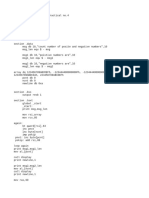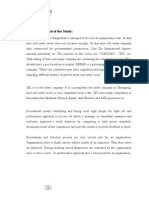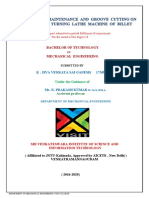0% found this document useful (0 votes)
21 views3 pagesMachine Learning
Machine Learning (ML) is a subset of artificial intelligence that focuses on creating systems that learn from data to make predictions or decisions. It encompasses various types such as supervised, unsupervised, semi-supervised, and reinforcement learning, along with popular algorithms and applications across multiple industries. Key tools for ML include programming languages like Python and R, as well as libraries such as TensorFlow and Scikit-learn.
Uploaded by
Anjum ManerCopyright
© © All Rights Reserved
We take content rights seriously. If you suspect this is your content, claim it here.
Available Formats
Download as DOCX, PDF, TXT or read online on Scribd
0% found this document useful (0 votes)
21 views3 pagesMachine Learning
Machine Learning (ML) is a subset of artificial intelligence that focuses on creating systems that learn from data to make predictions or decisions. It encompasses various types such as supervised, unsupervised, semi-supervised, and reinforcement learning, along with popular algorithms and applications across multiple industries. Key tools for ML include programming languages like Python and R, as well as libraries such as TensorFlow and Scikit-learn.
Uploaded by
Anjum ManerCopyright
© © All Rights Reserved
We take content rights seriously. If you suspect this is your content, claim it here.
Available Formats
Download as DOCX, PDF, TXT or read online on Scribd
/ 3

































































































